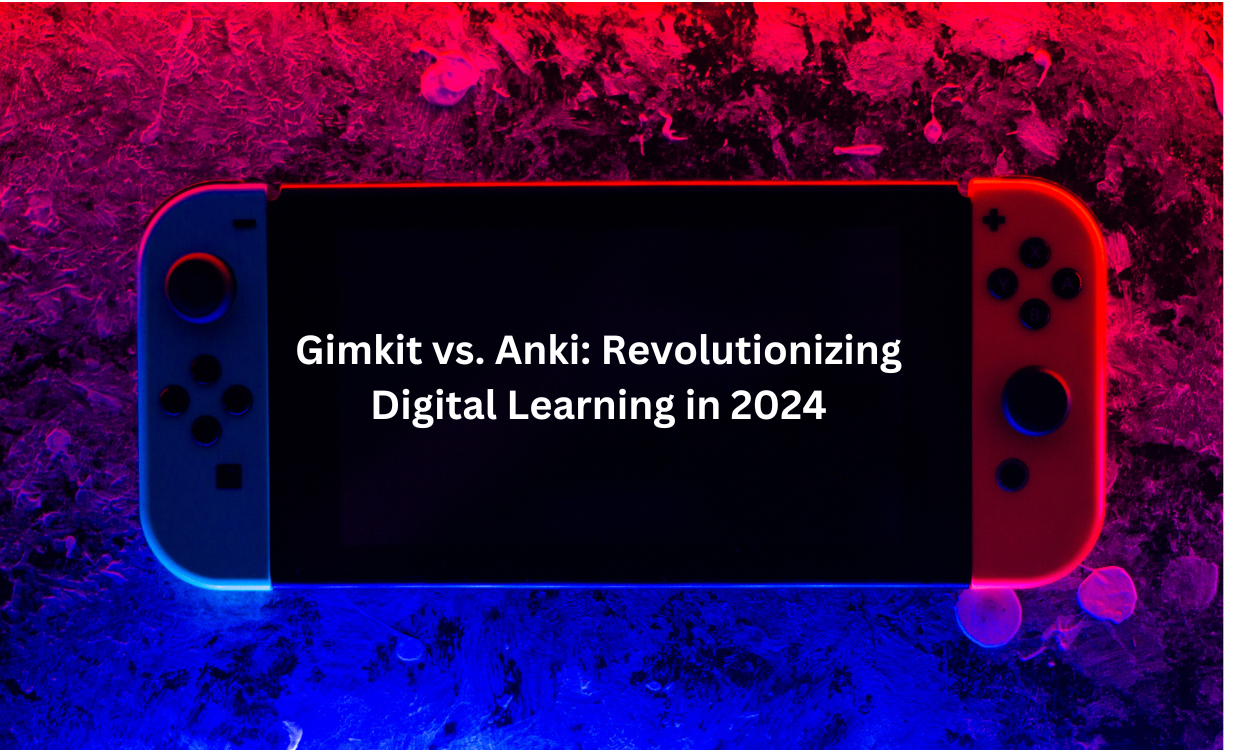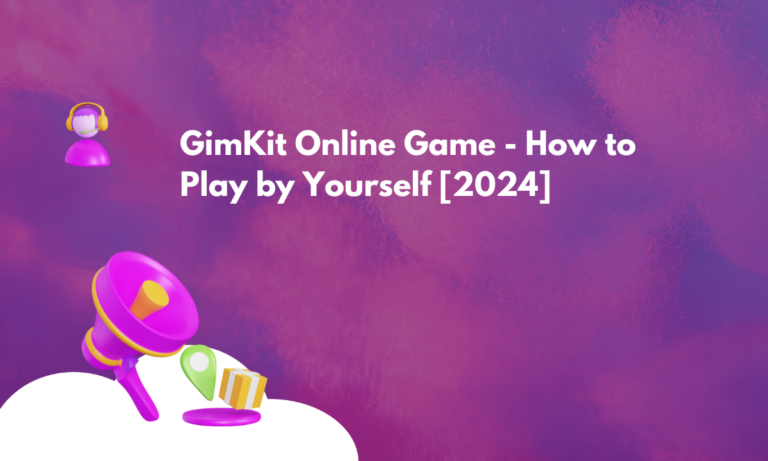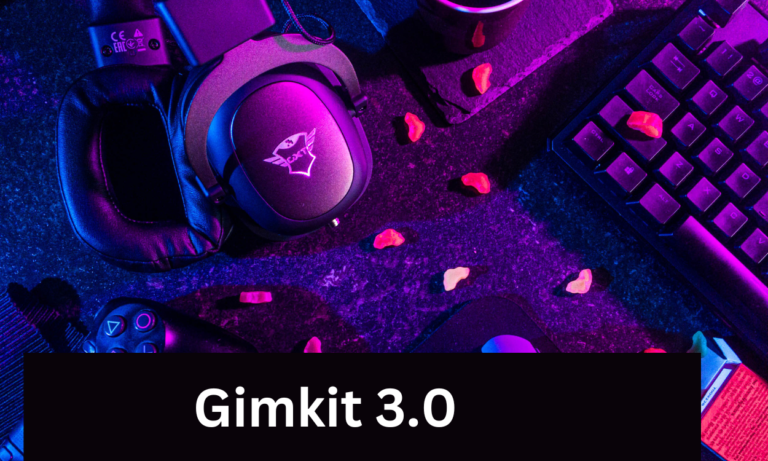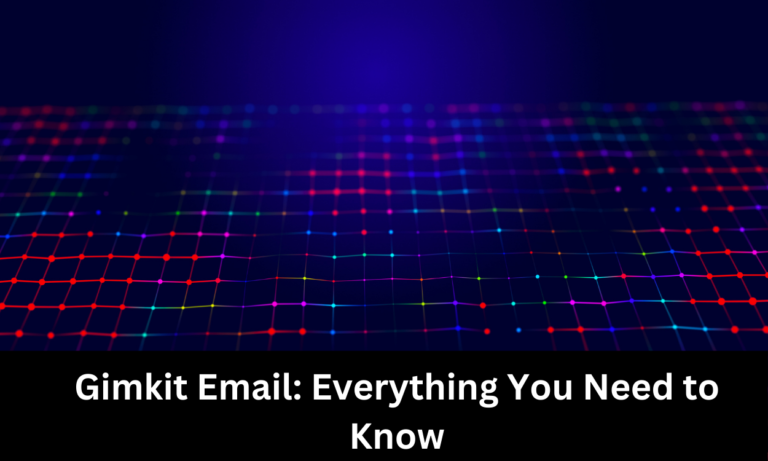Gimkit vs. Anki: Revolutionizing Digital Learning in 2024
Gimkit vs. Anki: Revolutionizing Digital Learning in 2024.In the ever-evolving landscape of educational technology, two platforms have emerged as game-changers: Gimkit and Anki. Both promise to transform the way we learn, but each takes a unique approach to achieve this goal. As we dive into 2024, students, educators, and lifelong learners alike are faced with a crucial question: Which platform will best suit their learning needs? In this comprehensive guide, we’ll explore the ins and outs of Gimkit and Anki, comparing their features, methodologies, and real-world impact to help you make an informed decision.
Introduction: The Digital Learning Revolution
As we step into 2024, the landscape of education continues to evolve at an unprecedented pace. Gone are the days when learning was confined to textbooks and classrooms. Today, digital platforms are revolutionizing how we acquire and retain knowledge. At the forefront of this transformation are two innovative tools: Gimkit and Anki.
Gimkit, founded by a high school student in 2017, has quickly risen to prominence with its gamified approach to learning. On the other hand, Anki, with its roots tracing back to 2006, has stood the test of time, relying on the scientifically-proven method of spaced repetition. Both platforms aim to make learning more effective and engaging, but they do so in markedly different ways.
In this article, we’ll delve deep into the world of Gimkit and Anki, exploring their features, methodologies, and impacts on learning outcomes. Whether you’re a student looking to ace your exams, an educator seeking innovative teaching tools, or a lifelong learner eager to optimize your study habits, this comparison will provide valuable insights to help you choose the platform that best aligns with your learning goals.
Let’s embark on this journey to uncover the strengths, weaknesses, and unique offerings of Gimkit and Anki in the context of modern education.
Gimkit: Gamification Meets Education
Gimkit has taken the educational world by storm with its innovative approach to learning through gamification. But what exactly makes Gimkit stand out in the crowded field of educational technology?
The Gamification Approach
At its core, Gimkit transforms studying into an engaging game-like experience. Here’s how it works:
- Virtual Currency: Students earn in-game money by answering questions correctly.
- Power-ups and Upgrades: The earned currency can be used to purchase power-ups, creating a sense of progression and strategy.
- Real-time Competition: Students can compete against classmates, adding an element of excitement to the learning process.
- Various Game Modes: From classic quiz modes to team-based challenges, Gimkit offers a variety of ways to engage with the content.
Key Features of Gimkit
- Customizable Quizzes: Teachers can create their own question sets or choose from a vast library of pre-made content.
- Live Games: Ideal for classroom settings, allowing for real-time interaction and engagement.
- Homework Mode: Extends learning beyond the classroom, allowing students to practice at their own pace.
- Progress Tracking: Both students and teachers can monitor performance and identify areas for improvement.
- Collaborative Creation: Teachers can work together to create and share content within the Gimkit platform.
The Psychology Behind Gimkit’s Success
Gimkit’s effectiveness lies in its ability to tap into fundamental psychological principles:
- Immediate Feedback: Players receive instant feedback on their answers, reinforcing correct information and quickly addressing misconceptions.
- Intrinsic Motivation: The game-like elements appeal to students’ natural desire for competition and achievement.
- Adaptive Difficulty: As players progress, the questions adapt to their skill level, maintaining an optimal challenge level.
Real-world Applications
Gimkit has found success in various educational settings:
- K-12 Classrooms: Teachers use Gimkit to review material before tests or introduce new topics in an engaging way.
- Higher Education: College professors have adopted Gimkit to make large lectures more interactive.
- Corporate Training: Some businesses are using Gimkit-style platforms for employee training and skill development.
While Gimkit’s gamified approach has proven highly effective for many learners, it’s important to note that it may not suit everyone’s learning style. Some students might find the game elements distracting or prefer a more traditional study method. This is where platforms like Anki come into play, offering a different approach to digital learning.
As we continue our exploration, we’ll delve into Anki’s methodology and how it compares to Gimkit’s gamification strategy. Both platforms have their strengths, and understanding these will help learners and educators make informed decisions about which tool best suits their needs.
Anki: The Power of Spaced Repetition
While Gimkit focuses on gamification, Anki takes a different approach to enhancing learning and retention. At the heart of Anki’s methodology is the scientifically-proven concept of spaced repetition. Let’s explore what makes Anki a powerful tool in the digital learning ecosystem.
Understanding Spaced Repetition
Spaced repetition is a learning technique that involves reviewing information at gradually increasing intervals. This method is based on the psychological spacing effect, which demonstrates that information is more effectively remembered when studied over time rather than all at once. Anki leverages this principle to optimize the learning process.
How Anki Works
- Flashcard Creation: Users create digital flashcards with questions on one side and answers on the other.
- Initial Review: Cards are presented to the user for review.
- Self-Assessment: After attempting to recall the answer, users rate their difficulty in remembering.
- Adaptive Scheduling: Based on the user’s rating, Anki’s algorithm schedules the next review of that card, with easier cards shown less frequently and harder ones more often.
Key Features of Anki
- Customizable Flashcards: Users can create cards with text, images, audio, and even LaTeX equations.
- Sync Across Devices: Study progress can be synchronized across multiple devices for seamless learning.
- Shared Decks: A vast library of user-created decks covering various subjects is available for download.
- Powerful Search: Easily find specific cards or groups of cards within large decks.
- Progress Statistics: Detailed analytics help users track their learning progress over time.
The Science Behind Anki’s Effectiveness
Anki’s approach is grounded in cognitive science research:
- Active Recall: The act of trying to remember information strengthens memory more effectively than passive review.
- Metacognition: By rating their recall difficulty, users engage in self-reflection, which enhances learning.
- Distributed Practice: Spreading out study sessions over time leads to better long-term retention compared to cramming.
Real-world Applications
Anki has found widespread use across various fields:
- Medical Education: Medical students often use Anki to memorize vast amounts of anatomical and pharmaceutical information.
- Language Learning: Anki is popular among language learners for vocabulary acquisition and grammar practice.
- Academic Study: Students in various disciplines use Anki to prepare for exams and retain course material.
- Professional Development: Some professionals use Anki to stay updated on industry-specific knowledge.
While Anki’s approach is highly effective for long-term retention, it may not provide the immediate engagement that some learners, particularly younger students, might prefer. The platform requires a certain level of self-discipline and commitment to regular review sessions.
As we continue our comparison, we’ll explore how Anki’s methodical, science-based approach contrasts with Gimkit’s more dynamic, game-like experience. Both platforms have their place in the digital learning landscape, and understanding their unique strengths will help users choose the tool that best fits their learning style and goals.
User Interface and Experience
The user interface (UI) and overall user experience (UX) play crucial roles in the effectiveness of any learning platform. Let’s compare how Gimkit and Anki approach mobile-first design best practices in their UI/UX design and how this impacts the learning process
Gimkit’s Interface
Gimkit’s interface is designed to be vibrant, engaging, and game-like, reflecting its gamification approach to learning.
Key Characteristics:
- Colorful Design: Bright colors and dynamic elements create an exciting visual experience.
- Intuitive Navigation: Game modes and options are easily accessible through clear menus.
- Real-time Updates: During live games, the interface provides instant feedback and score updates.
- Responsive Design: Adapts well to different screen sizes, from desktop to mobile devices.
User Experience:
- Engaging for Younger Learners: The game-like interface naturally appeals to students accustomed to video games.
- Potentially Overwhelming: Some users might find the dynamic elements distracting or overstimulating.
- Quick Start: Users can typically jump into a learning session with minimal setup.
Anki’s Interface
Anki opts for a more minimalist and functional design, focusing on efficiency and customization.
Key Characteristics:
- Clean, Uncluttered Layout: The interface prioritizes content over design elements.
- Customizable Appearance: Users can modify card layouts and apply different themes.
- Hierarchical Organization: Decks and sub-decks allow for structured content management.
- Detailed Statistics: Comprehensive study data is presented through graphs and charts.
User Experience:
- Focus on Content: The simple design helps users concentrate on the learning material without distractions.
- Steeper Learning Curve: New users might need time to understand all of Anki’s features and settings.
- Flexibility: Advanced users appreciate the high degree of customization available.
Accessibility Considerations
Both platforms have made efforts to ensure accessibility, but their approaches differ:
- Gimkit:
- Offers color contrast options for visually impaired users.
- Includes audio elements that can benefit auditory learners.
- May present challenges for users with certain cognitive disabilities due to its fast-paced nature.
- Anki:
- Simple interface works well with screen readers.
- Customizable card layouts can accommodate various accessibility needs.
- Lacks built-in audio features, which might limit its usefulness for some users with visual impairments.
Mobile Experience
In today’s on-the-go world, mobile accessibility is crucial:
- Gimkit:
- Offers a dedicated mobile app with a responsive design.
- Some features might be limited compared to the desktop version.
- Well-suited for quick study sessions or classroom participation.
- Anki:
- AnkiMobile (iOS) and AnkiDroid (Android) provide full functionality.
- Seamless sync across devices allows for consistent study experiences.
- Mobile interface closely mirrors the desktop version, ensuring a familiar experience.
Learning Curve
The ease with which users can start effectively using the platform is an important consideration:
- Gimkit:
- Intuitive for most users, especially those familiar with online games.
- Teachers might need some time to learn how to create and manage custom games.
- Anki:
- Basic usage (reviewing cards) is straightforward.
- Creating effective flashcards and understanding advanced features requires more time investment.
The UI and UX of Gimkit and Anki reflect their core philosophies and target audiences. Gimkit’s lively, game-inspired interface aims to make learning fun and engaging, particularly for younger students or those who thrive in interactive environments. Anki’s no-frills approach caters to users who prefer a distraction-free, customizable study experience.
As we continue our comparison, we’ll see how these design choices influence other aspects of the learning experience on both platforms, from content creation to long-term effectiveness.
Content Creation and Customization
The ability to create, customize, and share content is a crucial feature of any modern learning platform. Both Gimkit and Anki offer tools for content creation, but their approaches differ significantly. Let’s explore how each platform handles this aspect:
Gimkit’s Content Creation
Gimkit’s content creation system is designed to be user-friendly and engaging, mirroring its overall approach to learning.
Features:
- Question Editor: Intuitive interface for creating various question types (multiple choice, true/false, fill-in-the-blank, etc.).
- Media Integration: Ability to add images and audio to questions, enhancing engagement.
- Import Options: Users can import questions from spreadsheets or other file formats.
- Collaborative Creation: Teachers can work together on question sets, fostering a community of educators.
- Student-Created Content: Options for students to contribute questions, promoting active learning.
Customization Options:
- Game Mode Selection: Choose from various modes like Classic, Team Mode, or Trust No One.
- Difficulty Levels: Set different difficulty levels for questions within a game.
- Time Limits: Customize the duration of games or question response times.
- Visual Themes: Apply different visual themes to games for added engagement.
Sharing and Discovery:
- Public Library: Access a collection of user-created content.
- Easy Sharing: Share question sets with other teachers or students within the platform.
- Integration: Seamless integration with learning management systems like Google Classroom.
Anki’s Content Creation
Anki’s content creation focuses on efficiency and flexibility, aligning with its spaced repetition methodology.
Features:
- Card Templates: Create reusable templates for different types of flashcards.
- Rich Text Formatting: Support for text formatting, LaTeX equations, and HTML.
- Media Embedding: Easily add images, audio, and video to flashcards.
- Cloze Deletion: Quickly create fill-in-the-blank style cards.
- Bulk Adding: Efficiently add multiple cards at once using CSV files or plain text.
Customization Options:
- Card Layouts: Fully customizable card designs using HTML and CSS.
- Field Customization: Define custom fields for different types of information.
- Scheduling Options: Adjust review intervals and learning steps for individual decks.
- Add-ons: Extend functionality with community-created add-ons.
Sharing and Discovery:
- AnkiWeb: Platform for sharing and downloading user-created decks.
- Export/Import: Easy export and import of decks in various formats.
- Collaborative Study: While primarily individual, some users share decks within study groups.
Comparison of Content Quality
The quality of user-generated content can vary on both platforms:
- Gimkit: Often features more creative and engaging question sets, but may sometimes prioritize entertainment over depth.
- Anki: Tends to have more comprehensive and academically-focused content, but may lack the interactive elements found in Gimkit.
Teacher vs. Student Content Creation
Both platforms offer different experiences for teachers and students:
- Gimkit: Empowers both teachers and students to create content, fostering a collaborative learning environment.
- Anki: More focused on individual creation, though teachers often create decks to share with students.
Conclusion:
Gimkit and Anki serve different purposes and learning styles. Gimkit is better suited for interactive, classroom-based learning with a focus on engagement and friendly competition. It’s especially good for teachers wanting to make review sessions more exciting.
Anki, on the other hand, is ideal for individual, long-term learning and memorization. Its spaced repetition algorithm makes it particularly effective for retaining information over time, making it popular among students, language learners, and professionals needing to master large amounts of information.
The choice between Gimkit and Anki depends on the specific learning context, goals, and personal preferences. For group learning and immediate engagement, Gimkit is preferable. For personal, long-term study and information retention, Anki is the better choice.






